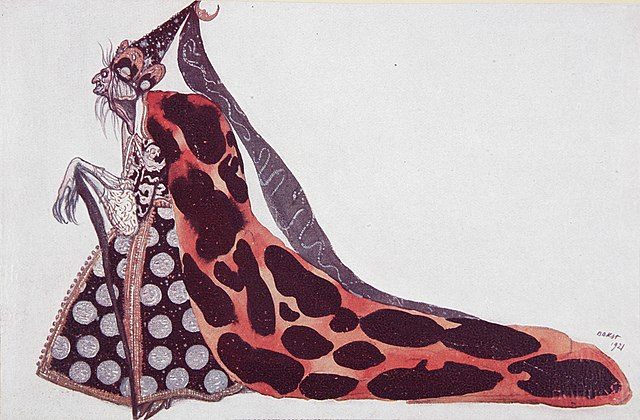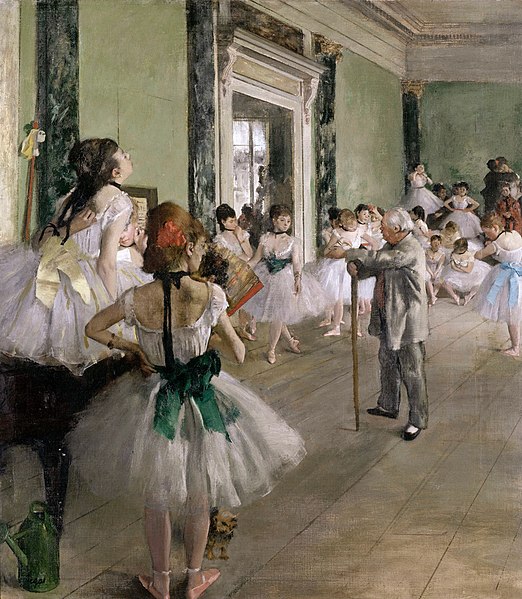The Sleeping Beauty (ballet)
The Sleeping Beauty is a ballet in a prologue and three acts to music by Pyotr Ilyich Tchaikovsky, his Opus 66, completed in 1889. It is the second of his three ballets and, at 160 minutes, his second-longest work in any genre. The original scenario was by Ivan Vsevolozhsky after Perrault's La belle au bois dormant, or The Beauty Sleeping in the Forest; the first choreographer was Marius Petipa. The premiere took place at the Mariinsky Theatre in St. Petersburg on January 15, 1890, and from that year forward The Sleeping Beauty has remained one of the most famous of all ballets.
Original cast members costumed for Act I. At center is Carlotta Brianza as Aurora. Mariinsky Theatre, St. Petersburg, 1890
The bad fairy Carabosse by Léon Bakst, who created the décor and about 300 costume designs in 2 months for Diaghilev's lavish 1921 production of The Sleeping Beauty in London.
Carlotta Brianza as Princess Aurora and Pavel Gerdt as Prince Désiré, costumed for the Grand Procession of Act III in Petipa's original production of The Sleeping Beauty. (Mariinsky Theatre, St. Petersburg, 1890)
Alexandra Ansanelli as Princess Aurora and David Makhateli as Prince Florimund in a Royal Ballet production of Sleeping Beauty, 29 April 2008.
Ballet is a type of performance dance that originated during the Italian Renaissance in the fifteenth century and later developed into a concert dance form in France and Russia. It has since become a widespread and highly technical form of dance with its own vocabulary. Ballet has been influential globally and has defined the foundational techniques which are used in many other dance genres and cultures. Various schools around the world have incorporated their own cultures. As a result, ballet has evolved in distinct ways.
Classical bell tutus in The Ballet Class by Degas, 1874
Louis XIV as Apollo in the Ballet Royal de la Nuit (1653)
Marie Sallé, classical ballet dancer
The Valse des cygnes from Act II of the Ivanov/Petipa edition of Swan Lake








